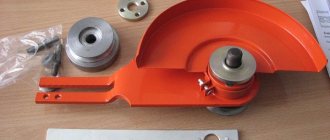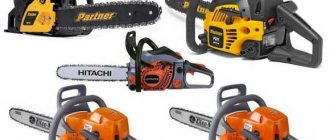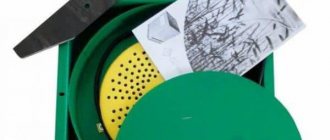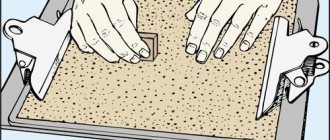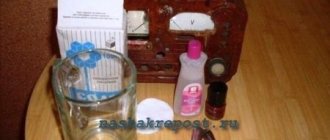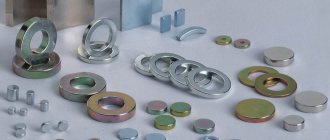Neodymium magnets are the most powerful magnetic material of the new generation today, which has found wide application in many branches of science and technology, as well as in everyday life. Each of us today can encounter them in everyday life, be it buying holders for a refrigerator, headphones, a metal detector, or a computer hard drive in which they are also used.
Neodymium is an active and fairly hard rare earth metal, which, when combined with iron and boron, acquires an incredibly high magnetization ability. This NdFeB alloy, first obtained in 1982, is used to make neodymium magnets of various shapes and sizes. Strong little magnets are most likely located near you right now, for example in your computer or smartphone.
What are neodymium magnets capable of?
Their main advantage over ferrite and other permanent magnets known to man is the high efficiency of the generated magnetic field, which is approximately 10 times higher than that of analogues. At the same time, the process of their demagnetization occurs very slowly - only 5% every 100 years, respectively, and their service life is practically unlimited, that is, they are “permanent” in the literal sense of the word.
Due to their powerful adhesion force to metals, neodymium magnets can hold objects that are 50 and even 100 times their own weight. For example, to unhook a magnetic cube with a side of 5 mm from a metal product, you will need to apply a force of 1 kg. Tiny disc or rectangular magnets can be used as magnetic holders for objects, eliminating the usual mounting methods such as screwing or gluing.
Did you know?
A magnet disk with a diameter of 8 mm and a thickness of 5 mm weighs only 2 grams and at the same time creates a force of more than 1.7 kilograms!
Definition
What is a magnet? This is a material that has a certain degree of magnetization. This ability arises due to the fact that the molecules of a magnet have their own field and do not move chaotically, as in many other substances, but strictly in two directions. This mutual opposition has the properties of attraction and repulsion of metal objects. If you try to connect magnets with the same poles, you may feel rejection. Opposite sides, in turn, will attract each other. This has to do with the direction in which magnetic field waves move. It is worth noting that no piece of magnet can be unipolar. When it is broken, the molecules in each piece again form the north and south poles.
Magnet adhesion force for detachment and shear
Neodymium magnet as a hanger
Adhesive strength is an important characteristic of a neodymium magnet that you should pay attention to when choosing one. It is important to select a product with a certain power reserve. There are two types of adhesive force: peel and shear. Which of the two characteristics is more important depends on the tasks that the magnet performs.
- Pull-off adhesive force
is the force that must be applied to lift a magnetic material from a surface. The characteristics of the product indicate its attractive force under ideal conditions, under which it is completely adjacent to a smooth, even steel sheet with a thickness of at least 20 mm and is torn away from it at a right angle. Since in practice the conditions are far from ideal, the holding force in reality will be lower than declared. - Shear adhesive force
is applied when the magnet moves along the surface of the product. This parameter is approximately 15-50% of the pull-out force. If the load is higher than the declared characteristics, then the object will slide along the vertical surface. For example, a rectangular magnet 20x10x4 mm can withstand a pull-out load of 4 kg, but when used for shear, its maximum load will be 1.8 kg. For many applications, shear force is the main characteristic of a neodymium magnet.
Traction force depends on many factors. For example, on a rough surface it is slightly lower than on a smooth and even surface. The thinner the metal on which the magnet is attached, the weaker it will hold. Objects do not always completely adhere to the magnetic surface, and the larger the area of their contact, the stronger the attraction.
But there are other factors that should not be forgotten. For example, not all metals and alloys are magnetic in the same way. If the product is painted, has a polymer coating or rust, then the adhesion force will also decrease somewhat. It is also necessary to pay attention to the class of neodymium alloy. The higher its serial number, the higher the magnetic energy. For example, N45 > N38.
Thus, the adhesive strength of a magnet depends on the following main factors:
- product size;
- magnetic alloy class;
- fastening method - pull-off or shear;
- thickness and roughness of the metal base;
- contact areas of contact surfaces;
- presence of paint and varnish coatings and rust.
To make it easier to separate two magnets, apply force not to separate, but to shear.
Magnetotherapy
Physiotherapy with a magnet is often used. What it is? This procedure is called magnetic therapy and is carried out for therapeutic purposes. The effect of this method is to influence the patient's body using magnetic fields under low-frequency alternating or direct current. This treatment method helps get rid of many diseases, relieve pain, strengthen the immune system, and improve blood flow.
It is believed that diseases are caused by disturbances in the human magnetic field. Thanks to physiotherapy, the body returns to normal and the general condition improves.
From this article you learned what a magnet is, and also studied its properties and applications.
What is the class of neodymium magnet?
Confused about what the letters and numbers on a magnet mean? – The letter “N” is the grade of the alloy, and the number behind it indicates the class - the maximum magnetic force in megaGauss-Oersted (1 megaGauss-Oersted ≈ 0.8 kgf). On sale, as a rule, there are products made from materials from N35 to N52. The most popular classes are N38 and N45. Higher grades should be used where very strong adhesion is required and the available magnet space is limited. Otherwise, it is more profitable to use two N38 magnetic holders instead of one N52.
Table. Alloys and their magnetic properties.
| Brand/Class | Residual magnetic induction, mT (kG) | Coercive force, kA/m (CE) | Magnetic energy, kJ/m3 (MGsE) |
| N35 | 1170-1220 (11,7-12,2) | ≥955 (≥12) | 263-287 (33-36) |
| N38 | 1220-1250 (12,2-12,5) | ≥955 (≥12) | 287-310 (36-39) |
| N40 | 1250-1280 (12.5-12.8) | ≥955 (≥12) | 302-326 (38-41) |
| N42 | 1280-1320 (12,8-13,2) | ≥955 (≥12) | 318-342 (40-43) |
| N45 | 1320-1380 (13,2-13,8) | ≥876 (≥12) | 342-366 (43-46) |
| N50 | 1400-1450 (14.0-14.5) | ≥876 (≥11) | 382-406 (48-51) |
| N52 | 1430-1480 (14,3-14,8) | ≥876 (≥11) | 398-422 (50-53) |
High business profitability
An entrepreneurial idea, the essence of which is the production of magnets, has a profitability of 100 percent. And this is even taking into account the minimum prices that will be set for products. You can make about 8 magnets on one A4 sheet. The cost of such souvenirs will vary from 50 to 100 rubles. The cost of the manufactured magnet will not exceed 40 rubles.
Setting up a magnet manufacturing business is not too difficult. The entrepreneur will not be required to purchase too expensive equipment and invest too much money at the initial stage. Even with the help of a simple computer and printer in modern conditions, you can print a high-quality drawing.
Effect of temperature on magnetic properties
Neodymium magnets “love” the cold, and their effectiveness does not weaken even at -130°C. Manufacturers must indicate the maximum operating temperature in the product characteristics. This is the temperature above which a magnetic material begins to lose its magnetism, either temporarily or permanently.
All N (Normal) brands usually operate at temperatures up to +80°C and lose, as a rule, 0.11% of energy when the temperature is exceeded by 1°C. Small losses will be recovered by cooling, but frequent heating and cooling cycles will degrade magnetic performance. Additionally, a rapid transition from cold to warm can cause the magnet to break or crack.
How to sell your products
As always, the issue of product sales is the most difficult stage of business. It cannot be said that refrigerator magnets are the most popular product, but many people make money from it, and make good money. And if someone could do it, why can’t you?
So, where can you sell your products?
Firstly, these may be magazine kiosks with which you need to enter into an agreement. Secondly, wedding agencies can offer their services to produce a small batch of magnets dedicated to a memorable event.
Manufacturing enterprises engaged in the production of absolutely any product in which a souvenir advertising magnet can be placed. Surely, many of our readers came across such refrigerator magnets in tea packs, in chocolates, on bottles of vegetable oil, etc.
Small wholesale quantities can be sold via the Internet. For this purpose, you can create your own Internet resource. The main thing to remember is that your imagination and creativity will help you achieve success in this matter. We wish you success!
Where can neodymium magnets be used?
Since their creation, they have confidently held the title of the most powerful and resistant to demagnetization magnets. Without them, many of the latest scientific developments in the field of motor engineering, medicine and electronics would be impossible. They are also useful for home, office work, hobbies, modeling and jewelry making.
Examples of everyday use - useful ideas
- For fixing plates, signs, hooks, shelves, photographs, artwork, and other interior elements.
- As holders for mosquito nets, screws on various tools, souvenirs or notes on the refrigerator.
- For organizing the storage of tools in the workshop, keys, knives, and various small items.
- For collecting small metal products in hard-to-reach places and removing metal debris.
- Cleaning engine and transmission oils.
- Inspection of walls for the presence of hardware inside.
- As locks for cabinet doors, hatches, and box lids.
- Manufacturing of devices for washing windows from the outside.
- Small magnets are used in the manufacture of handmade cards and folders, jewelry, and bag clasps.
- When conducting experiments and tricks.
- Using fastening magnets, you can secure a flashlight in the desired position, objects on a car body, a tarpaulin cover covering equipment, or a tablecloth on an outdoor table.
- Production of magnetic tiebacks for curtains.
- In needlework, modeling and creativity for fastening parts.
You can attach magnets to non-metallic materials in different ways - by gluing them to a base, sewing them into fabric or leather, or using electrical tape or tape. Any thermoplastic or epoxy adhesive of the “Moment” type is suitable for gluing.
Master class 4. Magnets from plastic mini-toys
The most stylish magnets can be easily made from plastic toys, namely animal figurines.
Materials and tools:
- Scissors or sharp knife;
- Thermal glue in a gun;
- Paint and brush if necessary;
- Small magnets;
- Plastic animal figurines.
Instructions:
- Cut the toy in half or lengthwise.
- Pour hot glue into the inside of the resulting workpiece to the very edges and leave to dry.
- When the glue has hardened, start painting the craft (including the “filling”) in 1-3 layers. At the end it can be additionally varnished.
- Now just glue the magnet to the figure and enjoy the result!
Safety precautions when working with strong magnets
Improper handling of powerful magnets can result in personal injury and life-threatening damage. When attracted to each other, they move with great acceleration and can pinch fingers or make a dent on an easily damaged surface. Neodymium products are very fragile, and when struck or dropped, sharp fragments break off. Never attempt to split, cut or drill into them. Drilling products can easily ignite. Magnets affect the operation of some devices, magnetic media, and pacemakers. Do not place them near credit cards, telephones, electronic devices, mechanical watches, CRT monitors, televisions, floppy disks, or cassette tapes. Keep them out of the reach of children (!).
What types of souvenir magnets are there?
First of all, magnets can be divided into:
- Embossed
- Flat
- Volumetric
The next classification criterion is the material of manufacture. It could be:
- Metal
- Glass
- Tree
- Plastic
- Ceramics
- Rubber
- Fur
- Paper
– almost any material that can be processed.
By the way, if in the recent past the production of souvenir magnets was carried out by a limited number of enterprises, today even a schoolchild can organize this activity. Fortunately, you can buy the components for the simplest magnet - a vinyl substrate with a ferromagnetic surface - without any problems. Even a preschooler can create his own drawing and print it on a printer.
Ferromagnetic materials have now replaced the previously used magnetized iron, which has expanded the possibilities for making souvenir magnets.
Where to buy a neodymium magnet?
Neodymium magnets of various shapes, sizes and holding forces are offered by the company, whose central store-warehouse is located in St. Petersburg. To familiarize yourself with the range and detailed technical characteristics of magnetic products made of neodymium, we suggest following the link.
Types and shape of neodymium magnets
Types of magnets available for ordering through the website:
- disks;
- rings;
- rectangles;
- squares;
- rods (cylinders);
- discs and plates with a countersunk hole for a screw.
A neodymium disk is a universal form of magnetic fastener that has an adhesive force of up to 55 kg and is used as a holder or retainer. Its variety - a disk with a hole for a self-tapping screw - is used when it is necessary to fix a magnetic holder on a wooden, plastic or concrete surface (wall, cabinet, panel) for subsequent storage of keys or other small iron items.
Magnets in the shape of a ring (washer) have found application in souvenirs, advertising products, products with magnetic locks and clamps. They can be tied to a rope and used to clean liquids and bulk products, and search for hardware in water. Magnets rods (rods) and rectangles are widely used to create household magnetic fasteners, door latches, as well as in modeling, advertising, and electronics.
Most consumers buy neodymium magnets in China, since this country is the leader in the extraction and production of neodymium. Today there is no need to order them on AliExpress and wait a long time for delivery. Wholesale delivers these products to Russia, and the price of neodymium magnets is no higher than on the Chinese website. Small disk magnets with a diameter of 3 to 10 mm can be purchased at prices ranging from 5 to 20 rubles. Medium models with a diameter of 20-30 mm will cost no more than 100 rubles. The cost of the most powerful and largest magnets does not exceed 2000 rubles.
Applications of Ferrite Magnets
Ferrites are considered the most popular permanent magnets. Thanks to strontium included in the composition, the material does not corrode. So what is a ferrite magnet? Where is it used? This alloy is quite fragile. That's why it is also called ceramic. Ferrite magnets are used in automotive and industrial applications. It is used in various equipment and electrical appliances, as well as household installations, generators, and acoustic systems. In automobile manufacturing, magnets are used in cooling systems, window lifters, and fans.
The purpose of ferrite is to protect equipment from external interference and prevent damage to the signal received via the cable. Thanks to this property, magnets are used in the production of navigators, monitors, printers and other equipment where it is important to obtain a clean signal or image.
What can you catch?
Fragments of historical monuments - knives, weapons from the times of the Great Patriotic War - are often recovered from the bottom of lakes and rivers. A magnet with good attractive force will pull out hidden treasures in wells and garbage pits. Cossack sabers were repeatedly raised from the Dnieper. All products containing iron and ferromagnetic metals will be attracted to the magnet.
Pure gold is not magnetized, but such jewelry also contains a ligature (a mixture to impart strength). For example, products of 585 standard contain 41.5% other metals, including nickel, which is highly attractive.
You can also find silver, but not all its varieties can be raised. Sets of past centuries, with the addition of ligature, are often mined from the depths of centuries-old lakes.
Stainless steel is magnetic to varying degrees, depending on the alloys added. Aluminum, brass, bronze, tin, lead and copper will not be attracted.
Often in your finds you can find metal sealed cylinders worn by German soldiers. They kept their valuables in them.
Places to find relics
Ideal search places are military crossings and centuries-old bridges. Valuable finds can be discovered when examining mill whirlpools and pre-revolutionary wells. The drains, cesspools and station toilets surprise you with their artifacts.
Search for valuable coins
Only cheap royal change will not be attracted to the magnet, but medium-denomination coins made with an admixture of nickel and chromium will delight their treasure hunter. You shouldn't count on expensive coins, because... They were made of gold and silver, which means they are very weakly magnetized.
Accessories for search magnets
Thanks to proper use, transportation and storage, the search magnet will last a long time and will not lose its properties ahead of schedule. Accessories protect the unit from environmental influences and ensure efficient use and transportation.
Ropes for search magnets
Chinese cord and clothesline are the first step to failure. They only look very strong, but in practice they will break during the first dive. An “accident” will happen even if the object is too heavy or simply caught on a snag.
In order not to lose the magnet on your first “fishing”, you need to use a very strong rope. When choosing, it is important to consider its characteristics. For example, if the search involves a magnet capable of pulling out an object weighing 400 kg, then the breaking capacity of the cord should be no less. Particular attention should be paid to the diameter; it should be at least 0.4-0.5 cm. But the length depends on the scale of the search; rope of 10-15 meters is in great demand.
Ways to bind a search magnet
The main secret of success is proper lacing. Initially, you need to tie the magnet with a constrictor knot, use a surgical one a little higher, and secure it all with an academic one. Pull and cauterize the end. Tie the cord on your hand so you don’t miss it when casting.
Magnet senses electric field
A. P. Pyatakov, Candidate of Physical and Mathematical Sciences
A. K. Zvezdin,
Doctor of Physical and Mathematical Sciences
“Chemistry and Life” No. 5, 2013
Wherever you look, there is a magnet. Once upon a time, schoolchildren were told only about the compass, later - about its use in industry, and recently they started talking about the future maglev train. Although one could say that any electric motor and any transformer is an electromagnet. Today, it has become easier to convince the reader of the importance of magnets: suffice it to say that he almost certainly has a magnet at home (on the refrigerator door and in the microwave), in his pocket (on his cell phone), and dozens of magnets in his computer and car. There are countless of them in industry and medicine, and elementary particle physics cannot do without them - they are located along the entire perimeter of the accelerator ring and in most elementary particle detectors.
There are permanent magnets and electromagnets. Constants have one big plus - they do not consume energy, and several disadvantages - their field cannot be adjusted (and if possible, then slowly - mechanically moving), and it cannot be very strong. Electromagnets are free from these disadvantages, but they have one that permanent magnets do not have - they consume energy, and consume a lot. Sometimes they say that the problem is solved by electromagnets with superconducting windings, like the Tokamak. But, firstly, you can’t scoop up either liquid helium or liquid nitrogen from a lake on Earth, and secondly, the magnetic field of such electromagnets is also difficult to regulate.
An idea arises: to cross electric and magnetic fields, to find a substance or create a material that, when placed in an electric field, becomes a magnet, and in a magnetic field, on the contrary, exhibits electrical properties. Such substances are described in the article by A.P. Pyatakov and A.K. Zvezdin from Moscow State University. M.V. Lomonosov and the Institute of General Physics named after. A. M. Prokhorova.
Variable permanent magnet
Magnetic and electrical phenomena have been known since ancient times, but they were connected with each other much later, after the work of the classics of electromagnetism: Oersted, Ampere, Faraday, Maxwell. Following Ampere, the magnetic properties of permanent magnets began to be explained by “molecular” currents flowing inside the substance in each molecule. Although the nature of molecular currents remained unclear for a long time, the very possibility of perpetual motion of charges inside matter seemed promising (this possibility is also realized in superconductors, but at low temperatures). If it were possible to influence molecular currents using an electric field, then it would be possible to control permanent magnets with virtually no energy loss.
From left to right
: Pierre Curie (1859–1906), Bernard Tellegen (1900–1990), L. D. Landau (1908–1968) (
right
) and E. M Lifshitz (1915–1985), I. E. Dzyaloshinsky (
left
) and D. N. Astrov, George Rado, G. A. Smolensky (1910–1986)
In 1884, French physicist Pierre Curie suggested that the existence of such molecules and substances that would be magnetized under the influence of an electric field does not contradict known laws. American electronics engineer Bernard Tellegen later proposed creating a composite - a magnetoelectric medium in the form of a suspension, where particles would float, representing magnets linked to pieces of electret. And an electret is a substance that can be “charged” with an external electric field, and after that for a long time, for example, years, it creates an electric field around itself, just like a magnet creates a magnetic field. Many good dielectrics are electrets, but materials combining the properties of both an electret and a magnet have neither been found nor created. Although they came up with a name for them - “magnetoelectrics”.
The matter got off the ground when L. D. Landau and E. M. Lifshits pointed out that magnetoelectrics should be sought among antiferromagnets, that is, crystals consisting of oppositely magnetized sublattices (Fig. 1). I. E. Dzyaloshinsky named a specific compound in 1959 - Cr2O3, and a year later the magnetoelectric effect in this material was discovered by D. N. Astrov. Several years earlier, American scientists in the group of Professor George Rado tried to discover the magnetoelectric properties of various substances, but the search was unsuccessful because they did not know about the work of Landau, Lifshitz and Dzyaloshinsky - translations of books and articles were published with a delay. Having learned about Astrov's discovery, they demonstrated the opposite effect on Cr2O3 - electric polarization induced by a magnetic field.
Rice. 1.
Antiferromagnetism.
The idea of antiferromagnetic ordering was anticipated by the drawings of Maurice Escher, for example, “Day and Night” ( a
), in neighboring nodes of a crystal cell the magnetic arrows (moments) of the ions are directed in the opposite direction (
b
)
At the same time, at the Leningrad Institute of Physics and Technology, in the group of G. A. Smolensky, they were searching for magnetic ferroelectrics. An ordinary ferroelectric is a substance that by itself, without the participation of external influences, creates an electric field both inside and outside, that is, in a sense, an electrical analogue of a permanent magnet. A magnetic ferroelectric is a material in which, in the absence of external fields, both magnetization and electric polarization would be observed. It was assumed that magnetic elements would replace ions in already known ferroelectrics, and the first “ferromagnet” (or “multiferroic”, as these materials are now called) turned out to be “complex”; it was a solid solution of (1–x)Pb(Fe2/3W1/3)O3 — xPb(Mg1/2W1/2)O3.
Ferromagnets and multiferroics: chimera terms
To my misfortune, I called upon the Spirits. I. V. Goethe, “The Sorcerer’s Apprentice”
Three classes of ferroics: ferroelectric, magnetic and ferroelastic substances. At the intersection of these sets lie multiferroicsMany common words are similar to the mythological chimera - an animal with the head of a lion, the body of a goat and the tail of a snake. So the word “bus” came from combining parts of the words “car” and “omnibus” (from the Latin omnibus
- everyone, for everyone).
In a similar way, the term “ferromagnet” is made up of two words “ferroelectric” and “ferromagnet”. The word “ferroelectric” comes from the first substance discovered in which polarization exists in the absence of an electric field (spontaneous electric polarization), Rochelle salt, named after the French pharmacist Seignette
. And there is another miracle - substances in which, when the temperature decreases, the crystal, while remaining intact, is divided into domains - areas with different orientations of the crystal lattice (this is called a structural phase transition). Thus, the word “ferromagnet” is already a rather strange hybrid, but the term “multiferroic” is even more “chimerical”.Chimera of ancient mythology
In the English-language scientific literature, the names of all these three classes of substances begin with the prefix “ferro”: ferromagnetics
,
ferroelastics
,
ferroelectrics
, although iron has nothing to do with it.
This did not prevent, however, the Japanese scientist Keichiro Aizu from calling all three classes with the general term “ ferroics
” in the middle of the last century.
A similar story happened in the English language: a piece of “omnibus” migrated to “bus”, and then bus
became an independent word, meaning in addition to bus, also a data transmission channel.In the case of ferroics, the story continued: in the early nineties of the last century, a new genie was released from the bottle - the term “multiferroic” (from the Latin multi
- many) - to denote a substance that simultaneously belongs to at least two classes of ferroics. At the beginning of our century, when new media with magnetic and electrical properties appeared, this word unexpectedly quickly gained recognition and supplanted “ferromagnet”, so that the creator of the neologism, the Swiss scientist Hans Schmid, when it comes to the term he coined, recalls Goethe’s poem, an excerpt from which is given as an epigraph.
Stir or layer?
Later, simpler compounds were found, and bismuth ferrite BiFeO3 turned out to be especially interesting (Fig. 2). Most of its remarkable properties are a consequence of its differences from the ideal cubic structure. The rotation of oxygen octahedra (Fig. 2a) leads to the fact that in this antiferromagnet the magnetic arrows of neighboring ions are no longer strictly opposite, forming an angle of less than 180 degrees. As a result, they do not completely compensate each other, and a general magnetization of the crystal appears (such materials are called weak ferromagnets). Electrical and magnetoelectric properties are due to the displacement of ions along the main diagonal of the cube, as well as distortions of the octahedron (Fig. 2b). A bismuth ferrite crystal is also capable of stretching in rays of light (Fig. 2c) and turning into a semiconductor diode under the influence of an electric field (Fig. 2d). The last transformation occurs due to oxygen vacancies - charged defects that change the type of conductivity.
Rice. 2.
Crystal structure of bismuth ferrite:
in the centers of the cubes
there are iron ions,
in the vertices
- bismuth ions,
in the centers of the faces
- oxygen ions: rotation of oxygen octahedra (
a
), displacement of ions along the diagonal of the cube and the resulting distortion of the octahedra - ion displacements are shown
by arrows
(
b
) , electrostriction in bismuth ferrite is the stretching of a sample under the influence of light radiation, under a hundred-watt lamp the relative elongation is about a thousandth of a percent, which is not so small for a solid (c
)
, the formation of a pn junction under the influence of an electric field as a result of the movement of oxygen vacancies (
g
)
There are very few such “high-temperature” magnetoelectrics as bismuth ferrite, hardly more than a dozen, and even those have a significant drawback - noticeable conductivity at room temperature. This negates the main advantage of the magnetoelectric method of producing a magnetic field - when an electric field is applied, a current will begin to flow in such a substance, which means that energy consumption becomes noticeable. Therefore, in the 70s of the last century, the first attempts were made to create artificial composite magnetoelectric media in the form of a mixture of two powders (Fig. 3a): magnetostrictive particles changed shape in a magnetic field, they influenced the piezoelectric particles, and they, in turn, the deformations became electrically polarized.
The idea was great, but the effect turned out to be small and unstable. When stirring, lumps and clots were obtained, and the formation of channels from conducting magnetostrictive particles led to a “short circuit” of the sample, and therefore to the absence of electrical voltage. Then the idea of a “layer cake” or a sandwich of magnetostrictive and piezoelectric materials glued together arose (Fig. 3b). Conducting channels were no longer formed, and the magnetoelectric effect became 50 times greater than in Cr2O3. Using sensors on sandwich structures, it was possible to measure magnetic fields a million times weaker than the Earth’s field—the kind our heart creates as it pumps blood through its vessels.
When structure affects properties
A new stage in the creation of composite materials has come with the advent of modern technologies: now artificial magnetoelectrics are produced on chips in the form of films with columnar nanostructures (Fig. 3c). Nanofilm sandwich structures do not work well - adhesion to the chip substrate does not allow them to deform freely, and the columns are easily compressed and stretched in the vertical direction. In addition, such structures did not need to be specially created; they “self-organize” when two substances are simultaneously deposited onto the substrate: magnetostrictive, for example spinel CoFe2O4, and piezoelectric, for example barium titanate BaTiO3 or bismuth ferrite BiFeO3. By changing the crystallographic orientation of the substrate, it is possible to grow both magnetostrictive pillars in a piezoelectric matrix and piezoelectric pillars in a magnetostrictive matrix (Fig. 4).
Rice. 4.
The structure of the nanocomposite depends on the crystallographic orientation of the substrate plane: substrate with (001) orientation (
a
), substrate with (111) orientation (
b
); cubes correspond to piezoelectric crystals, octahedra - crystals of magnetostrictive material
What causes the two phases to precipitate in this way? The same phenomenon that causes a drop of water to spread on clean glass and roll into a ball on a waxed surface is surface tension. If the substrate is cut perpendicular to the [001] crystallographic direction (i.e., the z
coordinate system), then the substance of the magnetostrictive material does not wet the surface, collecting into drops, which then grow into columns, while the piezoelectric phase wets the substrate and envelops the columns, forming a matrix. On the (111) substrate, everything happens the other way around: a columnar structure of a piezoelectric material grows inside the magnetostrictive matrix.
When the characteristic dimensions of nanostructures are several interatomic distances, the phases of the composite begin to influence the internal structure and properties of each other. If layers of barium titanate are interspersed with a magnetic material with a similar crystal structure, for example, lanthanum manganite with calcium substitution La0.7Ca0.3MnO3, then an artificial magnetoelectric medium is obtained: due to the close proximity, the crystal structures of the two materials are subject to mutual distortions, which leads to the interaction of the electrical and magnetic subsystems. That is, it was possible not only to create a nanostructured material, but also to carry out engineering at the atomic level, changing the very properties of the component substances.
What about Curie's original idea of magnetoelectric molecules? It can be realized in organic molecular Dy3 nanoclusters, in which the magnetic atoms are three dysprosium atoms forming a regular triangle (Fig. 5a). In the state of the molecule with the lowest energy (ground state), the magnetic arrows (moments) of dysprosium ions are oriented parallel to the opposite side of the triangle (Fig. 5a). If there were more magnetic ions (as, for example, in the recently synthesized Dy6 cluster), they would form a “carousel” of magnetic moments (Fig. 5b). This arrangement is called “toroidal” because a circular electromagnet can be created by winding a wire around a donut-shaped (torus) magnetic core. Structures with toroidal ordering, following the tradition of denoting any ordering with the word “ferro,” are called “ferrotoroids.” They have a magnetoelectric effect - the application of a magnetic field causes a redistribution of magnetic moments: the number of ions whose magnetic moments are directed along the magnetic field increases. The displacement of magnetic ions entails a redistribution of charges, so that electrical polarization occurs. However, states of the molecule in which the magnetic moments are directed clockwise and states with the moments directed counterclockwise are equally likely to occur, and in these cases the magnetoelectric effect will be opposite. So the problem remains of how to obtain toroidal structures with one direction of rotation of the magnetic moments.
Rice. 5.
Organic molecular nanocluster based on rare earth ions: mutual orientation of the magnetic moments of dysprosium cations (
a
);
with toroidal ordering of magnetic moments in an external magnetic field H, in addition to magnetization, electric polarization P ( b
) is induced;
for comparison - a toroidal electromagnet ( in the center
)
The monitor will not produce memory
Tellegen's idea of a composite consisting of magnetoelectric particles that rotate in a liquid was realized with the advent of the first model of electronic ink - the gyricon (from the Greek "rotating image"). Girikon is a polymer medium in which two-color spherical polyethylene particles are embedded, rotating inside cavities with liquid (Fig. 6). The hemispheres of the particle differed not only in color, but also in electrical charge. Therefore, they could be oriented by applying an electric field, and black letters appeared on a white background. When magnetic impurities were introduced into the particles, the electric field began to control the magnetization of the system. However, the rotation took about a second, so the idea arose to “magnetize” not electronic paper, but the main component of another type of display - liquid crystals.
Rice. 6.
Girikon: polymer with embedded black and white spherical particles (
a
), magnetoelectric composite based on girikon: dipole particles rotate in microcavities with liquid.
+/– electric, S, N — magnetic poles ( b
)
In nematic liquid crystals (from the Greek “thread”), elongated molecules are located along one direction (Fig. 7a). Liquid crystal monitors work due to the property of nematic molecules to be oriented along the field (Fig. 7b), but if magnetic nanopillars are added to the liquid crystal, they will rotate along with the molecules. The result was a magnetic material controlled by an electric field, and it responded to changes in the electric field much faster - the switching frequency was kilohertz.
Rice. 7.
Liquid crystal with magnetic nanopillars: in the absence of electrical voltage (a), when the voltage is turned on (b)
This is already faster, but the gyrikon and liquid crystal cell cannot compete with the elements of semiconductor microcircuits either in size or speed, which means they are not suitable for magnetic memory devices. Instead of liquid crystal in magnetic memory devices, it was proposed to place a layer of solid-state magnetoelectric between the electrodes, however, due to the scarcity of high-temperature magnetoelectrics and high leakage currents, magnetoelectric memory is still far from being realized.
"Smart dust" collects energy
Miniaturization of electronic devices is the path to creating wireless sensor networks consisting of many sensors capable of collecting, processing information and exchanging it with each other. Such structures are sometimes called “smart dust”. The most obvious areas of application are environmental and medical monitoring, security systems. But sensors need power, and there are problems with it: if the sensor is located inside an object (for example, in a rotating part or in the human body), then you cannot connect a wire to it, the batteries are not small enough and durable enough, and solar panels are useless in the dark.
Rice. 8.
Remote power supply of sensors: a magnetoelectric transducer based on piezoelectric and magnetostrictive materials located on a substrate made of a tapering metal plate - a waveguide acoustic concentrator (
a
), a wireless sensor network node with magnetoelectric power (
b
)
Energy harvesting seems to be an interesting alternative.
- obtaining energy from the environment. These can be systems that accumulate the energy of mechanical, temperature fluctuations or radio waves, but the energy flow coming from natural sources is small - less than 1 μW/cm2. However, it is possible to create a radiation source that creates an alternating magnetic field at the location of the sensors. The energy of a magnetic field can be converted into electrostatic energy of charged capacitors using a magnetoelectric element, which consists of layers of magnetostrictive and piezoelectric materials located on a common metal substrate in the form of a plate tapering towards one end (Fig. 8). An alternating magnetic field causes periodic deformation of the magnetostrictive plate at the resonant frequency. These mechanical vibrations are transmitted to the substrate and propagate along it, so that when approaching the narrow end, the concentration of acoustic energy and the amplitude of the vibrations increase. The vibrations of the substrate are transmitted to the piezoelectric plates, and an alternating electrical voltage arises in them. This design is a type of magnetoelectric composite material, but with the help of an acoustic concentrator it is possible to achieve a gain of two times compared to a traditional multilayer structure of bonded magnetic and piezoelectric layers.
Rice. 9.
Mechanical vibrations of a cantilever made of piezoelectric material: converted into electrical energy (
a
), piezoelectric element for collecting energy when walking (
b
)
To power implants in medicine, autonomous sensors, as well as communications and mobile electronics, it is better to use mechanical movement or vibrations, for example, vibrations of an elastic plate (in modern micromechanics and nanotechnologies such plates are called cantilevers) made of piezoelectric material (Fig. 9a). When a cantilever made of a magnetoelectric composite material oscillates in the Earth's magnetic field, the magnetostrictive layer experiences additional deformations that are transferred to the piezoelectric layer, and as a result, the amplitude of the alternating voltage reaches tens of volts. Such a device is proposed to be used on underwater vehicles and buoys, where there are always ocean waves and the Earth’s magnetic field.
One more remark must be made here: the oscillation frequencies found in natural conditions are low - hertz, tens of hertz at most. This means, on the one hand, the low power generated by the unit (power is proportional to the cube of the frequency), on the other hand, the not at all microscopic dimensions of devices capable of vibrating at these low frequencies. As a result, chargers provide only microwatts per cubic centimeter. Better results are expected from the use of other types of oscillatory motion: the human body when walking (piezoelectric elements located in the shoe (Fig. 9b) already allow one to obtain up to 1 mW/cm3) and even higher-frequency vibrations of a car engine - up to 30 mW/cm3. But in any case, we are not talking about replacing batteries in cell phones yet. The harvesting of free energy itself (“ energy harvesting”
") is reminiscent of the well-known process of “scraping the bottom of the barrel, placing it in the barns,” and this explains why in such cases another term is often used: “
energy scavenging
” (
scavenging
- cleaning, waste disposal).
The problem of the relationship between magnetic and electrical phenomena in a solid is extremely multifaceted, and this article shows only some of its aspects. This area of science is now actively developing, much remains unclear, and unknown effects await their discoverers.
Literature:
1. Smolensky G.A., Chupis I.E. Ferromagnets. "Advances in Physical Sciences", 1982, 137, 415–448. 2. Eerenstein W., Mathur ND, Scott JF Multiferroic and magnetoelectric materials. Nature, 2006, 442, 7104, 759–765, doi:10.1038/nature05023. 3. Pyatakov A.P., Zvezdin A.K. Magnetoelectric materials and multi-ferroics. "Advances in Physical Sciences", 2012, 182, 593–620.
What is special about acrylic magnets?
Every day you can increasingly see acrylic magnets on many people's refrigerators. They are quite beautiful and original. Therefore, their popularity is understandable. In addition, making acrylic magnets is not too difficult. They consist of only two parts:
- A body that serves as a blank. The material used is transparent plastic – acrylic.
- Printing insert.
When creating a magnet, the image is simply inserted into a previously made housing and snaps into place. With the help of prefabricated housings already available, the production of acrylic magnets occurs at a rapid pace.



